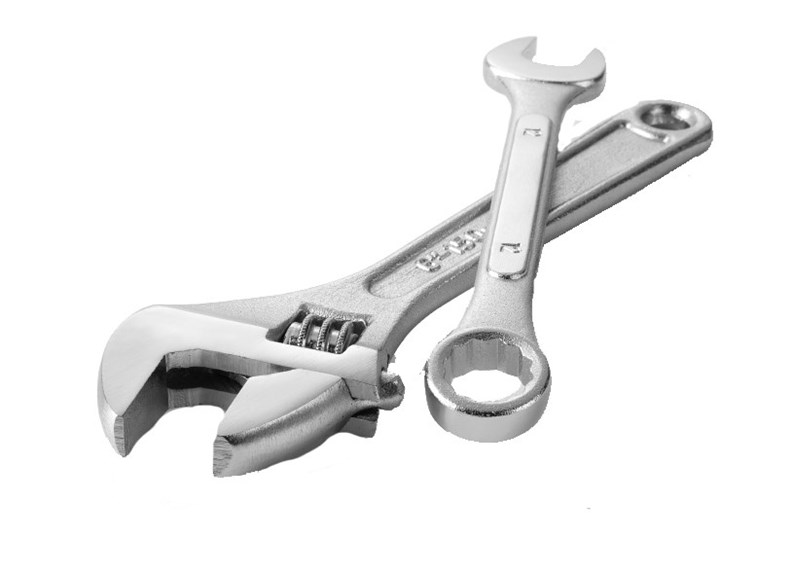In a city where living and business space alike are hard to come by, wildly expensive, and constantly needing to be revamped, the question of where tenants should store their belongings begs to be asked. No one wants to give up livable space for storage closets, so creative alternatives are necessary to maximize usable dwelling areas while at the same time providing storage that's safe, clean and convenient for all residents. The placement of these areas can range from basements to in-unit facilities; it's up to residents and boards to decide which kind is right for their particular building.
Depending on tenants' needs, containers range from wire cages with padlocks to entire built-in units side by side in a designated storage area complete with keyed access doors. Bicycles, camping equipment, holiday ornaments and luggage are among the most commonly stored items. For this reason, some buildings offer different kinds of spaces for their tenants to use, and charge according to the amount of space used.
Generally, the security of residents' belongings is monitored by the building's super or doorman, but it's important to establish who will have access to individual storage units themselves. According to Joshua Goldman, President of Manhattan-based Bargold Storage, "Only the tenant should have access and keys to their storage facility. Once a storage company has access to a tenant's unit, they're going beyond storage rental and must also take responsibility for what's inside."
An important aside is that it is actually illegal for a storage company to have keys to a tenant's unit. Alan Edelstein of A & D Steel in Long Island City says that they need an authorization letter from a tenant in order for his company to make a master key for the super or the board to hold on to - but that request is the exception rather than the rule.
If you can think it, it can be built. A residential storage company can compose a survey of a building's tenants, assess the responses, and install the type of storage units deemed most popular or useful. Some companies go so far as to build and install a free trial unit in the decided area so tenants will have an opportunity to see how it works and make decisions based on the actual model. Once the decision is made, the installation process is relatively quick. From the initial consultation, new storage space can usually be available in a few weeks.
Dependent upon where the actual facility is, there are several other perks to providing storage units for tenants. Edelstein says that storage units add value to available unused space, which can make your basement or old utility rooms into convenient, moneymaking amenities.
Some buildings have cavernous basements that haven't been used - or cleaned for that matter - in decades. According to Goldman, installing storage units is an effective way of beautifying the dormant space, which may include cleaning it up and adding lights to make the space more desirable and inviting. He then adds that storage units can be custom designed to work with spatial oddities like staircases and support beams. Alternatively, says Jamie Barnard, a New York sales representative with Wirecrafters, a storage company based in Louisville, Kentucky, "Generally buildings will have the area cleaned up and whitewashed, with a few fluorescent lights added. [By the time we start putting up units], the space is ready to go."
With the addition of containers - be they steel, treated wood, or wire - the area is much easier to clean and maintain on a regular basis. With more foot traffic, the areas actually become safer and more secure for belongings. Tenants are free to enter their own number-coded storage area and retrieve items at their leisure without having to wade through their neighbor's Stairmasters and boxes of discarded baby clothes. Not only does this make storage efficient and safe, but also it adds an amenity to the buildings roster, thus attracting new tenants.
The price of the actual product depends on the type of unit installed. A&D Steel, for example, offers two different kinds of lockers: steel or mesh. Mesh is the less expensive of the two, though beyond that it is just a matter of how many units to install, how large or small they need to be, and what the building is willing to do to the space.
There are several options a co-op or condo can look at when funding a storage project, and they all include at least some revenue. First off, tenants may be offered the option to purchase their unit outright. In such contracts, the installing storage company usually includes maintenance in the price of the unit. According to Goldman, how much maintenance is needed during a given year really depends on the amount of foot traffic and wear-and-tear on the unit, but general upkeep is part of the installation package, as is keeping the space looking good. Edelstein agrees, adding that "[Most self-storage units] are maintenance free. They don't need to be painted because the finish is baked enamel."
Besides storage unit ownership, there are also rent and rent-to-own options wherein the building or individual can opt to purchase the unit at the end of the lease. Leases are generally between 12 and 48 months long, and during the lease, the rental to the tenant offsets the entire cost of the unit, resulting in added revenue for the building. Edelstein says that generally, boards charge between $20 and $50 per month for the lockers, depending on the size. Alternatively, Bargold Storage provides the cleaning, renovation, and actual units themselves all free of charge to the building, and rents the units directly to the tenants. Some direct-rental storage companies remit a percentage commission back to the building from each unit rented. According to Goldman, his company "Write[s] over $100,000 in checks each month to buildings."
By contrast, according to Barnard, Wirecrafters offers what his company calls "a no-money-down finance option. We don't get involved with collecting money from tenants." Barnard asserts that buildings can make three or four times the profit by handling the money themselves.
Not every building has the immediately available space to convert into a storage area. Other options include using space in a parking garage, or smaller units placed inside residents' dwellings. While not as ideal as the basement conversion, there are reasonable and attractive lockers that can go virtually unnoticed or become usable pieces of furniture. Granted, this option does not offer the same amount of storage capability as the out-of-unit model, but it still provides a place to put things not used on a daily basis. The parking garage option also offers smaller storage capabilities placed at various points around the facility. Woven wire mesh storage units are popular in this instance, since they can be butted up against two adjacent walls or left free standing, and come in a variety of sizes. While they are "open" containers, they are still very secure.
Storage of items should be thought out carefully, and it is important to note that while you may not use an item every day, it doesn't mean it should necessarily be placed in the storage units. Among the list of things not to be stored are jewelry, food items, combustible items, heirlooms or artwork, and irreplaceable items or those of specific sentimental value. These are the things better kept close to you in a temperature-controlled climate where they are easily monitored. According to Edelstein, one other item that should not necessarily be kept in the unit is paint - something that's overlooked as a possible flammable liquid.
One benefit that wire cages have over solid-sided designs, according to Barnard, is that the wire or mesh cages are more cost-effective, and see-through. They "offer easier inspection - you don't necessarily know what is being stored in solid cages, not to mention the flow of light through the space," Barnard says.
If you are in a building that currently lacks storage space and just happen to have a basement or other unused common area, you may not have a gold mine on your hands, or you could very well have a least a silver mine awaiting development. A simple phone call to a reputable storage company is the easy first step toward reducing clutter, cleaning up your unused spaces, serving your shareholders, and building value in your building.







Comments
Leave a Comment